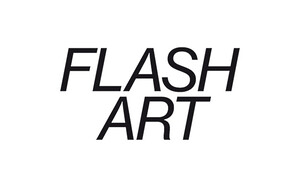February–March 2019
Deep currents of inheritance, nostalgia, presence, and nonlinear time buoy this issue of Flash Art, the first of 2019. Readers can find personal remembrances of Etel Adnan among the three texts that compose a special dossier devoted to the work of the 93-year-old Beirut-born artist and poet. Noura Wedell recalls dinners spent with Adnan, a friend of her mother’s, and Hans-Ulrich Obrist describes his first encounter with Adnan’s work, which would spawn a many-years-long generative collaboration. The dossier also includes a new and unpublished text by Adnan herself, in which she reflects on her immigration to the US and her consequent political education in the struggle for black liberation.
Also in this issue, Adrienne Edwards’s study of blackness in performance focuses on artists who counter the “historical and social weightedness” of the body with an acknowledgement of the particular histories and social conditions that have produced it, “while simultaneously expressing a desire to maneuver, circumnavigate, and reimagine” those conditions. In her analysis, we see artists turning away from representation and instead to opacity, illegibility, and concealment: “a productive withholding.”
Also in this issue:
Quinn Latimer considers the recent work of Rosalind Nashashibi, and the artist’s lateral and nonlinear movements through space and time and form, “as if the strange politics of the parable and the documentary are meeting on some soft, cinematic shore.”
Other cinematic shores are the subject of a conversation between a panel of scholars, writers, and curators on the subject of black film, which, Michael Boyce Gillespie writes, “is always a question, never an answer.”
An essay by Eli Diner considers the sentimental currency of Vile Days, the collected writings of Gary Indiana for New York’s Village Voice, where Indiana served as art critic from 1985–89. “Memorialization,” he writes, “says a lot about the living.”
Kristian Vistrup Madsen writes that the Swedish pop group ABBA not only signals the end of the utopian social ambitions of midcentury urban planning and design, but also is defined by a weird temporal mode: “not in the moment, but with one foot in the door of what will have been. This is the restraint that reveals what is really at stake: everything.”
Kyoo Lee explores the “democalligraphic utopia” of Huang Jing Yuan’s Right to Write (2018), recently presented at the Shanghai Biennale, an installation that holds an “unmanicured display of the messy, messily precise assemblage of wor(l)ds.”
Aaron Weldon speaks to Tamara Henderson on the occasion of the exhibition of her Womb Life (2018) at the Biennale de l’Image en Mouvement in Geneva. The work, Henderson explains, “is under the influence of having two bodies: two brains, two noses, two hearts, four legs.”
A piece from the Flash Art archives is also reproduced in this issue: Thomas Lawson addresses “the return of narrative art” in 1979: “art pretending to know nothing about art, but continuing to use exhausted conventions as though in some part of the natural order.”
In Reviews:
Peter Halley: New York, New York. at Lever House and Sperone Westwater, New York; Cole Lu at 77 Mulberry, New York; Kayode Ojo at Martos Gallery, New York; 57th Carnegie International at Carnegie Museum of Art, Pittsburgh; Kate Spencer Stewart at the Gallery at Michael’s, Los Angeles; B. Wurtz at ICA, Los Angeles; Alexis Hunter at Goldsmiths CCA, London; Felipe Baeza at Maureen Paley, London; Raphaela Vogelat Berlinische Galerie, Berlin; Sam Pulitzer at Hamburger Banhof, Berlin; Carte Blanche to Tomás Saraceno at Palais de Tokyo, Paris; Biennale de l’Image en Mouvement; Raoul De Keyser at S.M.A.K., Gent; Alice Neel at Xavier Hufkens, Brussels; Rosemarie Trockel at Moderna Museet, Malmö; The Main Complaint at Zeitz MOCAA, Cape Town; XI Taipei Biennial; The Artist is Present at Yuz Museum, Shanghai.
We are pleased to announce Flash Art’s participation in the 2019 editions of ARCO Madrid; The Armory Show; Art Basel Hong Kong; Art Dubai and SP-Arte.



